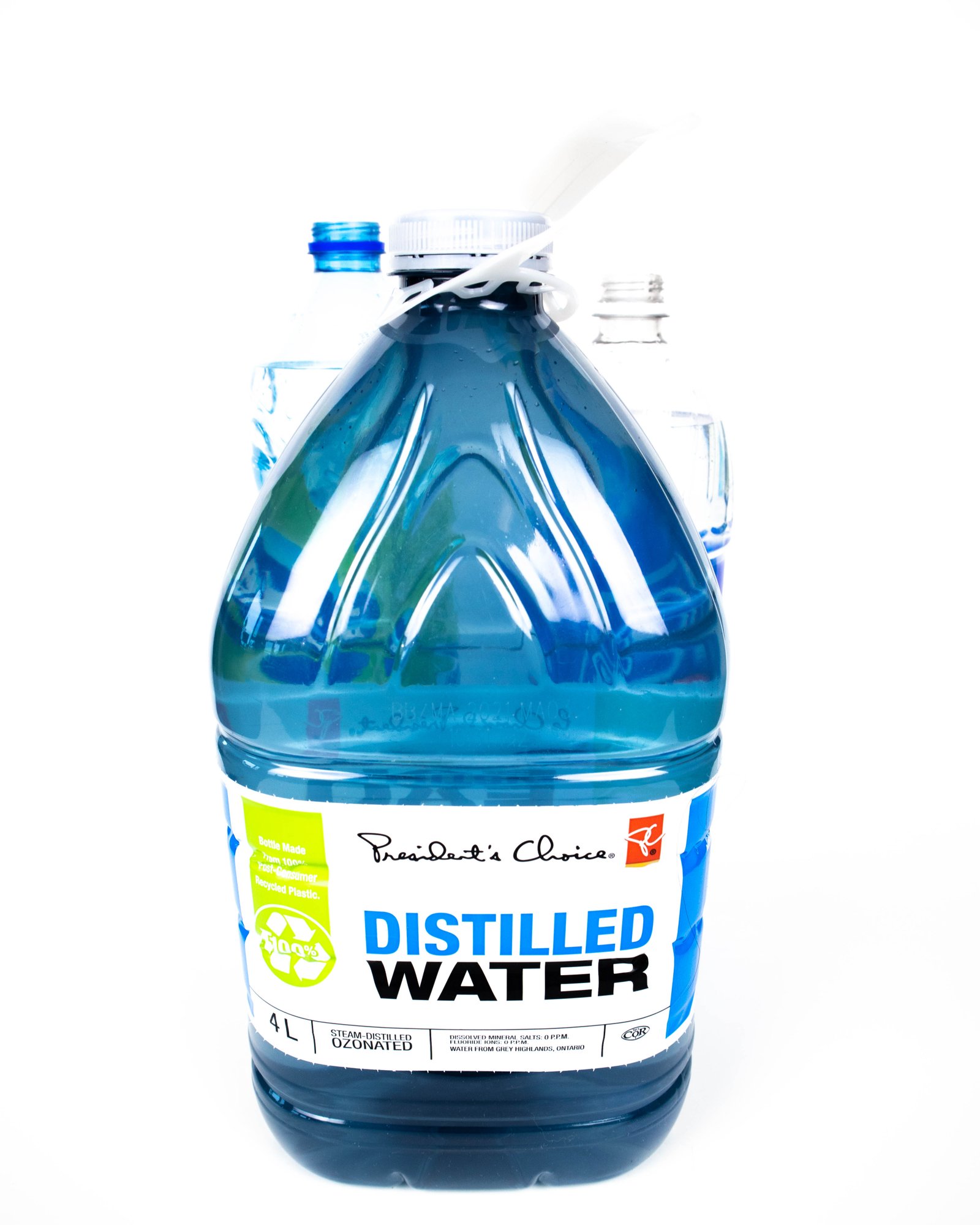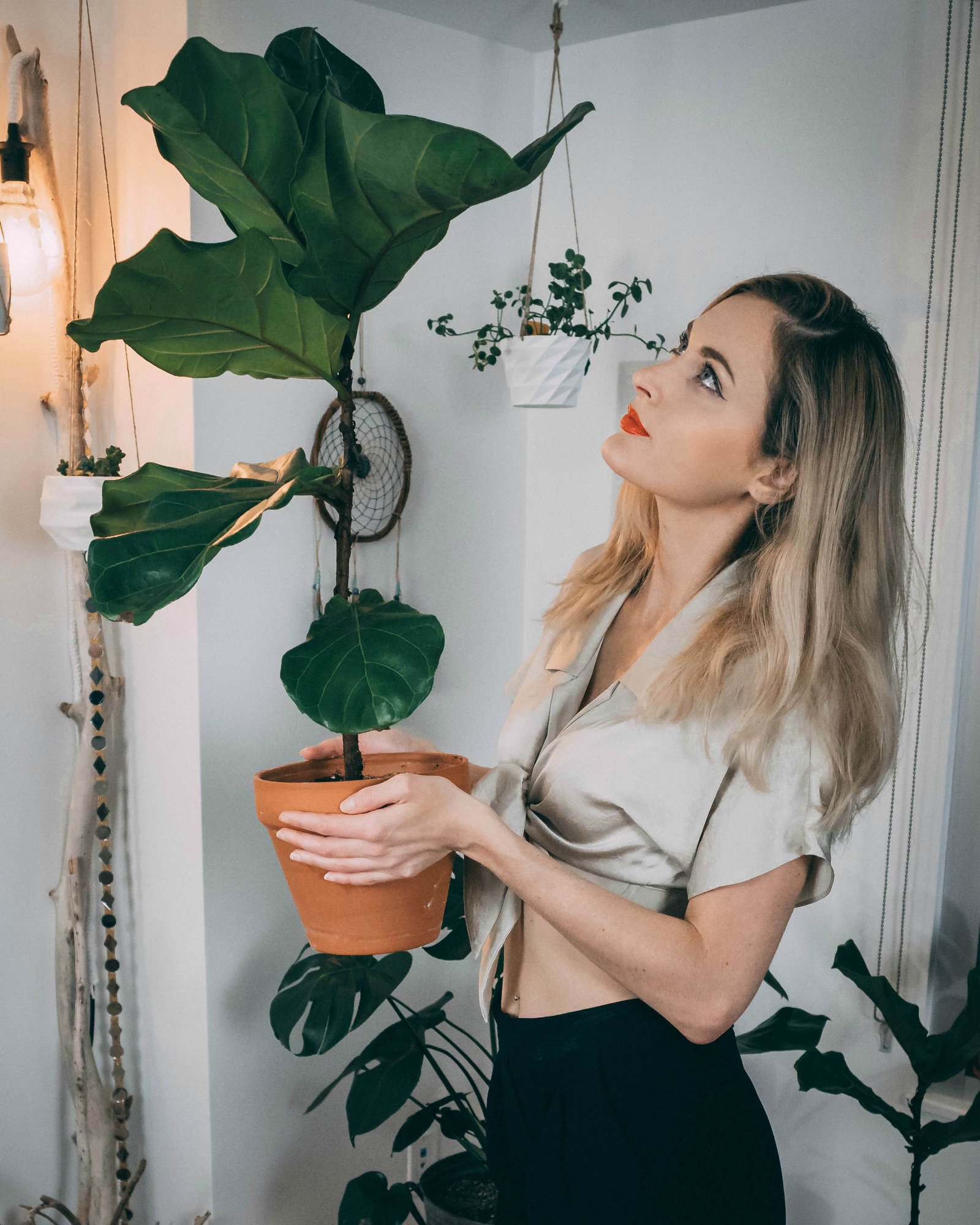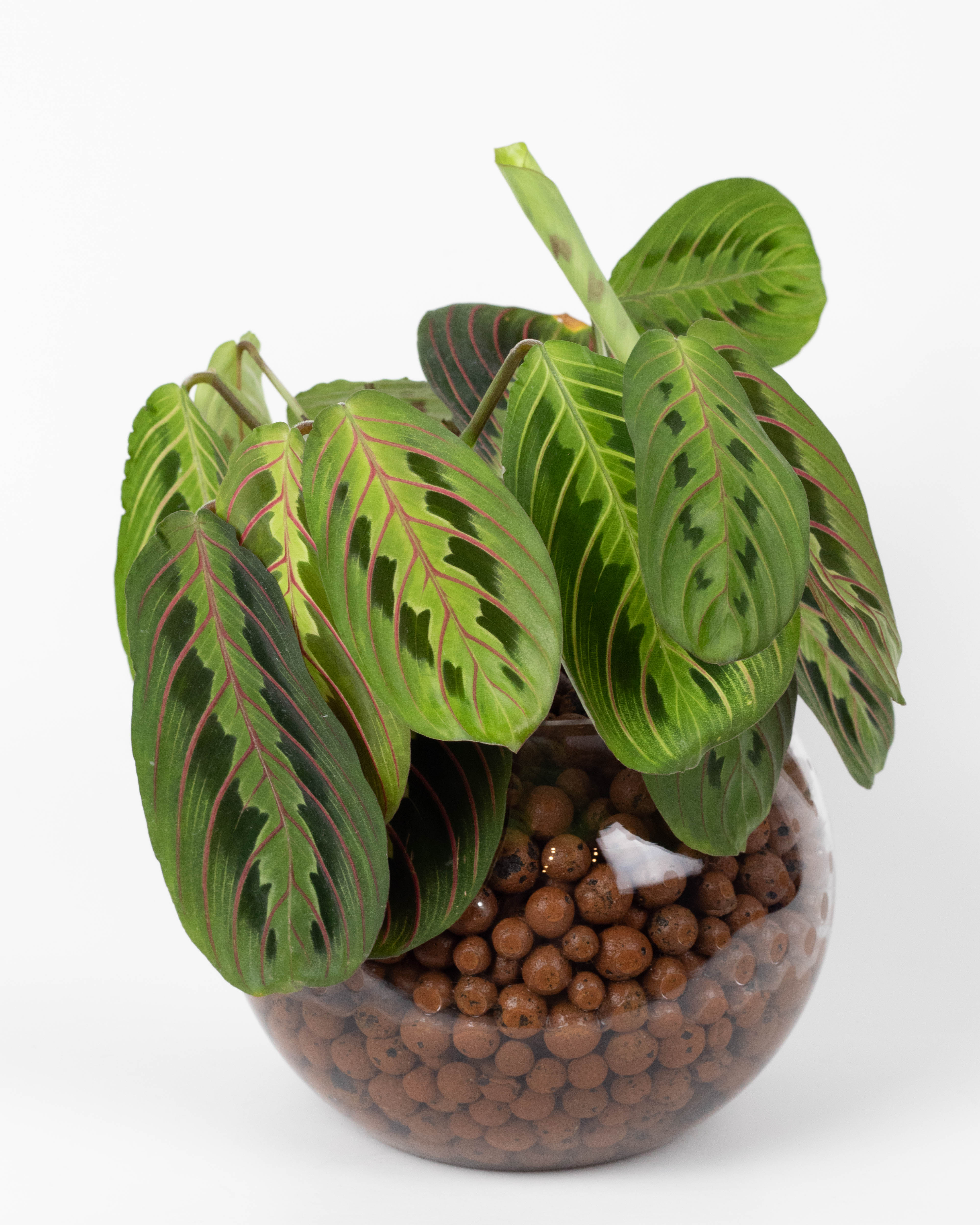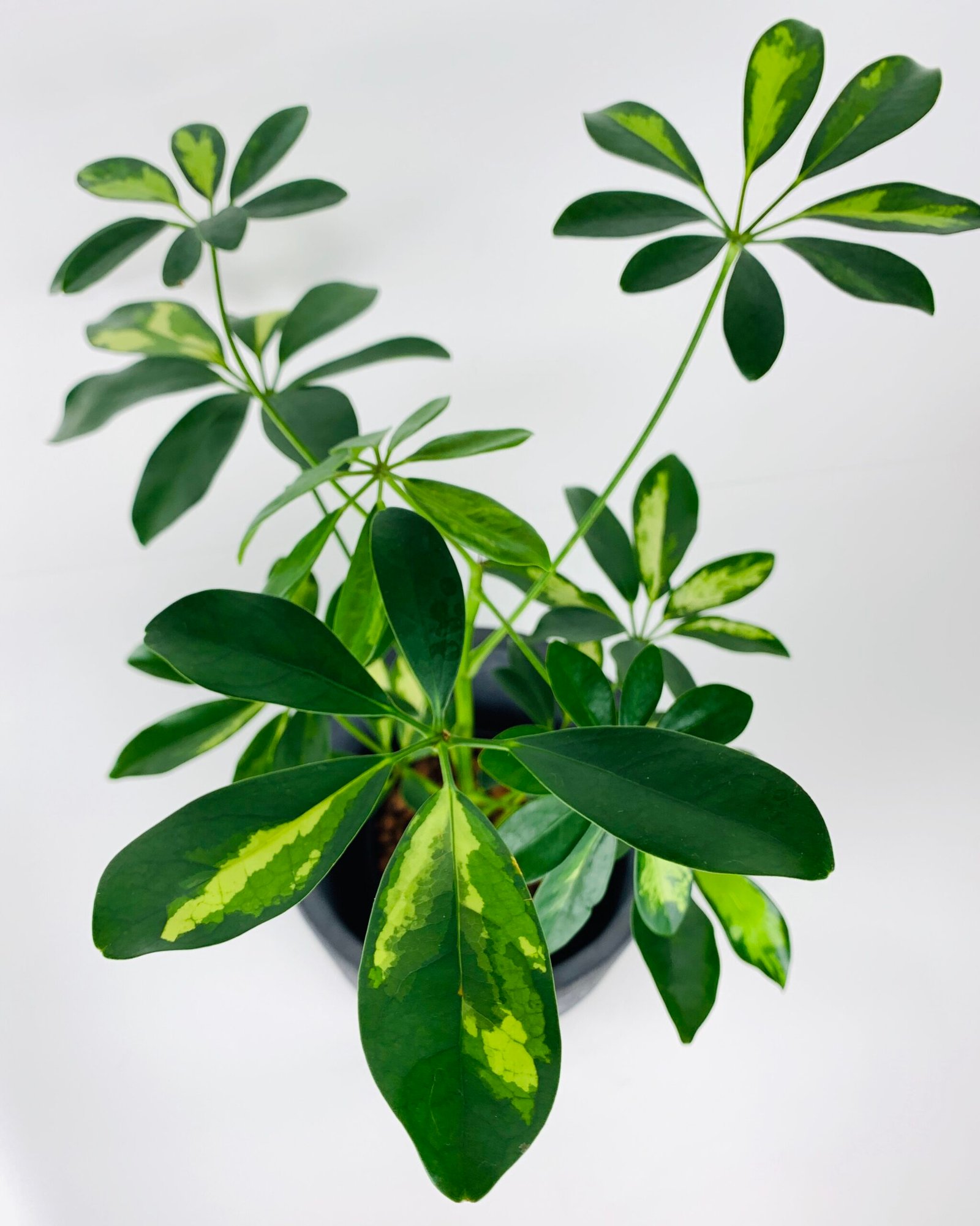Water and Semi Hydroponics

I often get asked, “what type of water should I use in semi hydroponics?” or “can I just use tap water?”
When choosing what type of water to use in semi hydroponics, ideally you want to use the purest water possible, that is, water that is free from contaminants, impurities, chemicals (chlorine and chloramines) and an overabundance of minerals (hard water). For these reasons, I like to use distilled water, but we’ll get more into that later.
Tap Water
Tap water is municipally supplied and treated so that is it safe for human use and consumption. While it might be safe for us to drink tap water, that doesn’t necessarily mean that it is good for plants in a semi hydroponic system.
Components of Tap Water that Affect Plants in Semi Hydroponics
Chlorine and Chloramines
While the chlorine and chloramines used to treat tap water kill harmful bacteria, both chemicals are a definite ‘no no’ for the long term health of plants in semi hydroponics. Chlorine and chloramines are toxic to the beneficial bacteria and microorganisms that live in the roots of plants, and their presence in semi hydroponic growing can result in stunted growth over time.
You might be left wondering, “but I water my houseplants in soil with tap water all the time and they’re doing great! Whats the difference?”
When using tap water for plants in soil, the soil forms a barrier against dissolved chemicals and impurities in the water, protecting the roots. Even then, over time, a buildup of contaminants from tap water can still have adverse effects on the roots of plants in soil. With semi hydroponics on the other hand, the water used to supply the roots with nutrients is the lifeline of the entire system. Without soil acting as a filter, roots in semi hydroponics have a constant, barrier-free access to the water used, making them far more sensitive to dissolved impurities and chemicals.
Hard Water
Tap water can sometimes also be “hard water”, that is, water than contains an overabundance of dissolved minerals such as calcium and magnesium. While both are essential macro minerals required by plants, their presence in a large quantity means that the pH level can become very high, especially when hydroponic nutrients are added.
Another factor to consider is that the pH of tap water has been adjusted using lime, and without treatment, may be too high for semi hydroponic growing (the ideal range for houseplants in semi hydroponics is 5.5-6.5).
When the pH is too high, it blocks the availability and absorption of nutrients by the roots. This means that even if there are dissolved nutrients available, the plant will essentially be starved, and will begin to suffer from deficiencies and stunted growth.
How to treat Tap Water for use in Semi Hydroponics
In order to make tap water safe for use in semi hydroponics, there are a few steps you can take to remove the harmful components:
Sunlight
Chlorine easily breaks down when exposed to sunlight, so leaving water out in the sun for 24-48 hours will effectively break down and remove it. Chloramines on the other hand, are more durable than chlorine and take much much longer to break down with sun exposure. The easiest way to remove chloramines would be to use an activated carbon filter.
Campden Tablets
Campden Tablets, a sulphur based product often used in wine and brewing beer, can also be used to remove both chlorine and chloramines and has the added benefit of also killing germs and bacteria.
Water Filters
For hard water, a basic carbon water filter can be used to remove dissolved minerals. Carbon filters also have the benefit of reducing the amount of chlorine and chloramines in tap water. There is however the drawback that not all minerals may be removed and the filter will need to be changed often, especially if the water in your area is very hard.
Distillation or Reverse Osmosis Systems
The most effective way to treat hard tap water would be through distillation or investing in a reverse osmosis system, which can be relatively expensive.
What about other Types of Water?
Spring Water
The same concerns lie with spring water as with tap water, in that the pH level may out of range and that it has been treated with chlorine or chloramines. For these reasons, it would be easier to simply use tap water and take the necessary steps to make it suitable for use in semi hydroponics.
Rain Water
Rain Water in theory should be a form of pure water (having a neutral pH of 7) that has been naturally distilled by nature. However, rain water mixes with carbon dioxide in the atmosphere, making it more acidic with a pH that usually measures around 5.6. While this falls within the suitable pH range for houseplants, one concern with using rain water would be environmental pollutants. Another would be the method of collecting the rainwater, such as from roof run off, which could lead to contaminants. It may also be difficult for some people to collect rain water in large quantities.
Distilled Water
Distilled water is water that has gone through a distillation process to remove all contaminants, organic chemicals, minerals, dissolved gases, heavy metals and bacteria.
If like me, it is a bit out of your budget to invest in a reverse osmosis system, distilled water is a great alternative and is by far my favourite choice for semi hydroponic growing once hydroponic nutrients are added. Distilled water can affordably be bought by the gallon (4 litres) for around $1 from most groceries or pharmacies.
However, an important thing to note when using distilled water for semi hydroponics is that nutrient concentrate must be added. Unlike pure natural water or tap water that contains some dissolved minerals, distilled water has had all minerals removed, and if used alone, will provide no nutrients to the plant whatsoever.
Benefits of using Distilled Water in Semi Hydroponics
Low Starting pH
One reason I love to use distilled water is for its low pH level. In its purest form, distilled water has a neutral pH of 7, however after distillation, it mixes with carbon dioxide in the air bringing the pH down to around 5.6-5.8. This is right at the lower end of the ideal range of 5.5-6.5 for houseplants in semi hydroponics.
Having a lower starting pH actually works out tremendously when preparing nutrient solution, since adding nutrient concentrate actually causes the pH to increase slightly. By using distilled water, once the nutrient solution is prepared, it will still be well within the lower end of the range.
Why is this ideal? Lets say you start with distilled water with a pH of 5.6, then add your nutrients (pH increases slightly), then fill your reservoir, and eventually flush and change the reservoir two weeks later. Over the course of the two weeks as water is used by the plant and evaporates from the reservoir, the nutrient and salt concentration will begin to increase, causing the pH to slowly go up over time. Therefore, by starting off with nutrient solution prepared with distilled water at a lower pH, this gives the pH range some room to increase over time without becoming too high in between flushings.
Alternatively, if using filtered tap water, you would need to measure the pH level of the water after nutrients have been added and adjust with pH up or pH down accordingly.
Baseline of Zero Minerals
Since distilled water has no mineral content, it gives a known starting baseline of zero minerals. This gives complete control over the quantity of nutrients added.
For this reason, I also like to use distilled water by itself (with no added nutrients) to top up the reservoir as it depletes and maintain the water level at a 1/3.
Why? As water evaporates from the reservoir or is used by the plant, the nutrient and salt concentration in the pot will increase, causing a rise in pH. The idea is that by topping up with plain distilled water, the pH and salt concentration will be kept in check in between flushings. However, with that said, I would only recommend topping up with distilled water a few times between each two week flushing. If the reservoir is depleting so fast that you are constantly having to top up with distilled water, it might be a good idea to do an earlier flushing and prepare a fresh batch of nutrient solution.
Potentially no Need to Adjust pH
Another great thing with using distilled water is it takes away the hassle of having to pH adjust your nutrient solution. Since it already has a pH on the lower end of the pH scale, there ‘likely’ will be no need to add drops of pH up or down. Knowing the starting pH level of distilled water is also especially useful if you’re new to semi hydroponics and have not yet acquired a pH meter or testing kit and pH up and down.
I would still always recommend testing the pH regardless, just to be on the safe side, since on a handful of occasions, I’ve seen the pH level of distilled water measure slighlty below 5.5 or above 6.
Low Cost
Distilled water is also conveniently available at most groceries and pharmacies and is relatively cheap to buy at around $1, give or take, per gallon (4 litre) jug.
FINAL THOUGHTS
To wrap it all up i’d highly recommend using distilled water for semi hydroponics, especially if you’re new to semi hydroponics and aren’t fully comfortable with pH buffers or measuring the pH of your water just yet, are unable to collect rain water in large enough quantities or do not have a reverse osmosis system.
It is still 100% worth it to invest in a pH meter or testing kit to test the different types of water out for yourself, as well as to check and monitor the pH of your nutrient solution and reservoir. It’s also important to become familiar with how pH works and to be in complete control over your semi hydroponic growing. Having pH up and down on hand is also useful incase you are ever heavy handed when mixing your nutrient solution.
Tap water can also be used as long as you take the necessary steps to make sure it suitable for use in semi hydroponics and won’t cause any harm to your plants in the long term. When using tap water, filtering is definitely the way to go!
One interesting thing to note however is that I always flush my plants using tap water, simply because I do not have enough distilled water or an easier alternative. For me personally, its much easier and more economical to flush my plants under the kitchen sink to remove plant waste and salt buildup. I would eventually like to invest in a reverse osmosis system – but for now, simply flushing with tap water hasn’t had any detrimental effects on my plants and I still always use distilled water when preparing my nutrient solution!
Please feel free to leave any comments or questions down below!
Happy Planting! ?
Disclaimer: Since the majority of this blog is sharing my personal experiences and advice on growing houseplants soil-free, I feel it necessary to state that I do not have a formal education in horticulture or hydroponics.The vast majority of my knowledge has been acquired through a lot of research, experimentation, trial and error, advice exchanged with other enthusiasts and a lot of hands on experience. I am not a horticultural expert. I am more of a self-taught hobbyist/enthusiast with a tremendous passion for continuous learning. The aim of this blog is to bring awareness to, guide and inspire others about using alternative methods for growing houseplants soil-free. Therefore, while this blog is meant to act as a resource and source of inspiration, it is important to understand that the decision to convert – and the vitality of – any plant converted to soil-free using the techniques outlined in this blog, is done at your own risk.



Chloe
Thanks for sharing. I am totally new to semi hydroponic and trying to educate myself before getting into it. When you say flushing every 2 weeks, does that mean dumping all water out and flushing the plant and Leca under tap water, then fill up reservoir with nutrient water? Or do I need to remove the plant from Leca to flush? Thank you.
Georgia Gravel
Hi Chloe! You are right, by flushing I mean dumping all water out and flushing the plant and Leca under tap water every two weeks, then filling with new nutrient solution/water. No need to remove the plant each time you flush, that may unnecessarily disturb/potentially damage the root system if you did it every-time. However, after a few months its a good practice to remove the plant from the LECA and trim the roots back since overtime, as the roots naturally grow into or towards the reservoir, the root system can become crowded and too much root overgrowth, if left unchecked can block the airspaces between the LECA and the roots can become starved of oxygen. Thats the pro/con of semi/passive hydro! You get some crazy happy roots that need to be managed! Sometimes, depending on the plant, you can opt to either trim the roots or even restart the whole root system if it is a plant that propagates easily.
Laura
I totally get using distilled water, however the large use of plastic would be a definite no no for me. That’s a lot of empty plastic jugs!
Georgia Gravel
Hi Laura! I know what you mean! Ideally I’d love to install a reverse osmosis system, but they can be pricey!